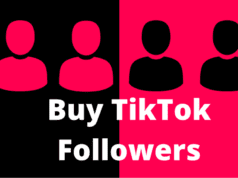
Did you know that Amazon’s advertising platform is the third-largest in the States? This means that if you aren’t leveraging its marketing channels, you’re missing out on lots of sales.
In recent years, Amazon marketing strategies have expanded and evolved a great deal and today, there are special PPC and SEO tactics that can help you harness the retail giant and drive sales.
Understanding the Amazon PPC and Amazon SEO in particular, and knowing how to use them, can make a huge difference for your business.

Image: freepik.com
Amazon SEO
Similar to Google, Amazon has an algorithm (called A9) that ranks the product listings. In order to master Amazon SEO, you need to figure out how this algorithm works.
Technically, even though Amazon is primarily an eCommerce platform, it is also a search engine that provides the best results for customers. So, if you want to rank well on Amazon SERPs, your product listings need to have all the factors required by the A9 algorithm.
These factors are a lot different from the factors required by Google because the top results aren’t websites but product listings.
So, here’s what you need to know about Amazon listing optimization to get your products in the top results:
#1 Include the primary keyword in the product title
The product title is the first thing the shopper sees when she or he clicks on a product listing. That’s why it needs to be both catchy and well optimized.
Conduct keyword research to determine which keywords Amazon shoppers use when searching for your product. Select a primary keyword (i.e. a keyword with a high search volume and low competition) and use it in your title.
Besides the primary keyword, your title needs to have the following elements
- Brand name
- Quantity (in case you’re offering more than one product)
- Model number, size, color, or pattern, if any.
Amazon allows 200 characters in the product title (including spaces), but you don’t have to use all of them. On the other hand, if your title is too short, it will be hard to rank high in the SERPs. About 50-80 characters should be enough to keep the title simple yet informative.
#2 Use good-quality product images
When it comes to eCommerce, images are everything. A poor-quality photo will never get you traffic or drive sales. You need to make sure your product images have the following:
- High resolution
- White background (don’t include other items you aren’t selling)
- Good lighting and realistic colors
- Size 1000 × 1000 pixels / 1500 × 1500 pixels
#3 List the most attractive product features in the bullet point section
When it comes to Amazon, the bullet points section can make a huge difference. Amazon allows up to 10 bullet points for vendors and only 5 for sellers.
Ensure that your bullet points:
- Include the primary keyword
- Are clear and organized
- Have high-quality and convincing content
- Contain an explanation on how your product will benefit the buyer
- Each has 10 to 255 characters
- Start with a capital letter (avoid typing all words in CAPS)
- Don’t include any special characters or punctuation marks in the end
- Use semicolons to separate the phrases
- Don’t include company details or website links.
#4 Write a great product description
If potential buyers find your product’s title and image attractive, they’re very likely to read the product description.
Here’s what your product description must have:
- One of your keywords
- High-quality, convincing content
- Clear and concise info.
#5 Offer competitive prices
Product pricing is one of the crucial ranking factors on Amazon so you must get it right. Here are some tips to help you set reasonable yet competitive prices:
- Have a look at your main competitors’ prices
- Pay attention to the sales rank
- Check the product’s price history
#6 Answer customers’ questions
The ‘answered questions’ section in Amazon’s product listings is one of the most important metrics that the A9 algorithm considers for ranking.
The fact that this section is highlighted on the product’s page speaks how important it is for conversion. Hence, product listings with more answered questions will rank higher.
#7 Get positive customer reviews and high ratings
Customer reviews and ratings also play an important role when it comes to ranking. When people are shopping, they tend to apply the filter that allows them to see only products with more than four stars. The best way to get more stars is to make sure your product is of the highest quality. If customers find your product food and helpful, they are also very likely to leave a positive review and tell others about it.

Image: freepik.com
Amazon PPC
Amazon uses a model similar to PPC to assist sellers in driving more sales. This model is called “sponsored ads.”
With the huge number of businesses and sellers opening Amazon accounts, the competition is fierce. Paid ads are the most convenient way to stand out from the crowd and drive some sales.
Types of Amazon PPC Ads
The Amazon PPC ads are classified into three groups:
1. Headline Search Ads
This type of ad is best for sellers that want to promote their brand. Headline Search ads, now known as Sponsored Brands, are the first thing a buyer sees when searching for products on Amazon’s Marketplace. This significantly increases product visibility and drives a substantial volume of traffic to your product listings. In addition, headline search ads feature a customized design with a headline, your logo, plus 3 of your products.
Here are 4 quick optimization strategies that can help you boost the Headline Search Ads’ performance:
- Match keyword intent with the landing page that you are driving traffic to
- Get additional keywords from your auto campaigns
- Optimize bids based on advertising cost of sale (ACoS) on a product-by-product basis
- Optimize ad copy with search intent.
2. Product Display Ads
Product Display Ads allow you to target your ad based on buyers’ interest or specific products. By being shown right under the “Add to Cart” button, this type of ads can increase the cart value at check out. All you need to do is select the Product Display option, choose your targeting, set your budget, set a few other parameters, and you’re good to go!
3. Sponsored Product Ads
Sponsored ads are one of the most effective ways to improve your products’ visibility and boost conversions. Sponsored product ads appear at the top part of the search results page, right where customers can see them. The only catch is you need to do is bid for relevant keywords. If your bid wins, your ad will be shown to potential buyers.
Amazon PPC is hands down one of the most effective ways of advertising your products, even more, effective than advertising on Google or Facebook. Because, even though these two are big platforms with huge audiences, Amazon boasts stronger buyer intent. And this is the main reason why you should use Amazon PPC.
People no longer search for products on Google first, but go directly to Amazon. This means that the chances of a shopper buying your item after clicking on your Amazon PPC ad are quite high. The usual conversion rate of Amazon product ads is between 10% and 20%, which is about 10x greater than the average market range.








